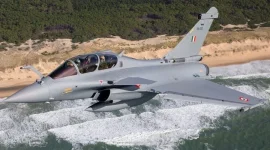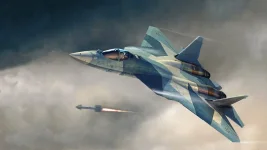- Views: 2K
- Replies: 17

The CEO of Pakistan's Global Industrial and Defence Solutions (GIDS) has made bold claims about the capabilities of their newly unveiled Shahpar-III unmanned aerial vehicle (UAV) at IDEAS 2024.
With a purported wingspan of 67 meters, operational altitude above 35,000 feet, endurance of 30 hours, range of 2,500 kilometers, and a 500-kilogram payload capacity, the Shahpar-III is being touted as a game-changer. However, these ambitious claims have been met with skepticism, given Pakistan's historical reliance on foreign technology for its UAV programs.
While the specifications, on paper, position the Shahpar-III among the most advanced UAVs globally, achieving such capabilities in just two years of development raises significant questions.
Even established aerospace industries struggle to achieve such rapid advancements. India's TAPAS UAV, for example, boasts a 24-hour endurance and 28,000-foot operational ceiling, but it has undergone years of rigorous development and testing by the Defence Research and Development Organisation (DRDO).
One of the most contentious claims is that the Shahpar-III is entirely indigenously developed. Pakistan has historically relied on Chinese and Turkish technology for its UAV programs, raising doubts about the true origins of the Shahpar-III's propulsion system and avionics.
Developing an indigenous engine capable of powering a UAV with the claimed specifications is a significant technological hurdle. It is highly probable that the Shahpar-III incorporates foreign components, despite claims to the contrary.
Furthermore, achieving the claimed performance with a 500 kg payload while maintaining operational stability at 35,000 feet requires advanced materials and propulsion systems – areas where Pakistan has limited expertise.
The operational performance of many UAVs often falls short of advertised capabilities. Even Israel's Hermes 900 UAV, used by the Indian Navy, does not possess the endurance and payload capacity claimed by the Shahpar-III. Independent testing is crucial to validate the actual performance of the Shahpar-III.
While India's TAPAS UAV might have a slower development timeline, it has undergone extensive testing to meet the specific needs of the Indian Armed Forces. It is designed to operate in challenging environments, including high altitudes and extreme weather, while carrying advanced surveillance payloads.
If Pakistan's claims about the Shahpar-III prove true, it could pose a challenge to India's aerial surveillance and strike capabilities. However, given the lack of transparency and the improbability of achieving such rapid development milestones, these claims may be aimed at creating a perception of technological parity with India.
India's focus on indigenous development, exemplified by the TAPAS UAV, ensures long-term self-reliance. In contrast, Pakistan's continued reliance on external partners raises questions about the sustainability of its UAV programs. The true capabilities of the Shahpar-III remain to be seen, and independent verification is necessary to assess its actual performance and impact on the regional security landscape.


